Abstract
The waters of one indoor bath and three outdoor baths were examined once an hour during 3 days (bath 1) or 6 days, for available chlorine, redox potential, permanganate number, ammonium, nitrate and total nitrogen, total bacterial count at 22° C., total bacterial count at 37° C. and faecal coliform bacteria. The weather, number of swimmers and the chlorine gas addition were continuously registered, and the pH was checked a few times at each bath. In bath 1, an indoor pool with aluminium sulphate precipitation about once a week and with sand filters back-washed every 2 days, less than 10 bacteria/ml. were found in all samples. In bath 2, an outdoor pool with aluminium sulphate precipitation twice a week and with sand filters back-washed twice a week, also few bacteria were found. In bath 3, an outdoor pool with only filtering through sand filters back-washed about every 14 days, high bacterial counts were found every day except the first, when the filters had been newly back-washed. In bath 4, an outdoor pool with only filtering through sand filters back-washed about once a week, high bacterial counts were found now and then during the first 4 days when the weather was warm, but few bacteria were found the last 2 days when the weather was cold and windy, and there were few swimmers.
Values from different analyses on the same sample showed relatively good correlation between the redox potential and the free available chlorine. In bath 3 both the redox potential and the available chlorine were weakly correlated to the bacterial count, but in bath 4 there was no such correlation. No other factors were well correlated with the bacterial count either.
The bacterial counts at 22° and 37° C. were of the same order. No faecal coliforms were ever found. Use of these bacteria as indicator organism in swimming pools is criticized.
The method of using certain minimum values of the free available chlorine as guarantee for a satisfactory bacteriological quality of the swimming pool water is also questioned. The degree of purity of the water is fundamentally connected with the disinfecting power of the available chlorine.
Use of certain minimum values of the redox potential, according to these investigations, seems to be a method of somewhat greater accuracy. Provided that the methods of precipitation are performed correctly and filters are being back-washed often enough, then an automatically registering redox potential device, perhaps connected to the chlorine gas pump, ought to constitute a good control of the hygienic quality of a swimming-pool water. This must, however, always be completed by bacteriological examinations, preferably made at high bathing load.
Full text
PDF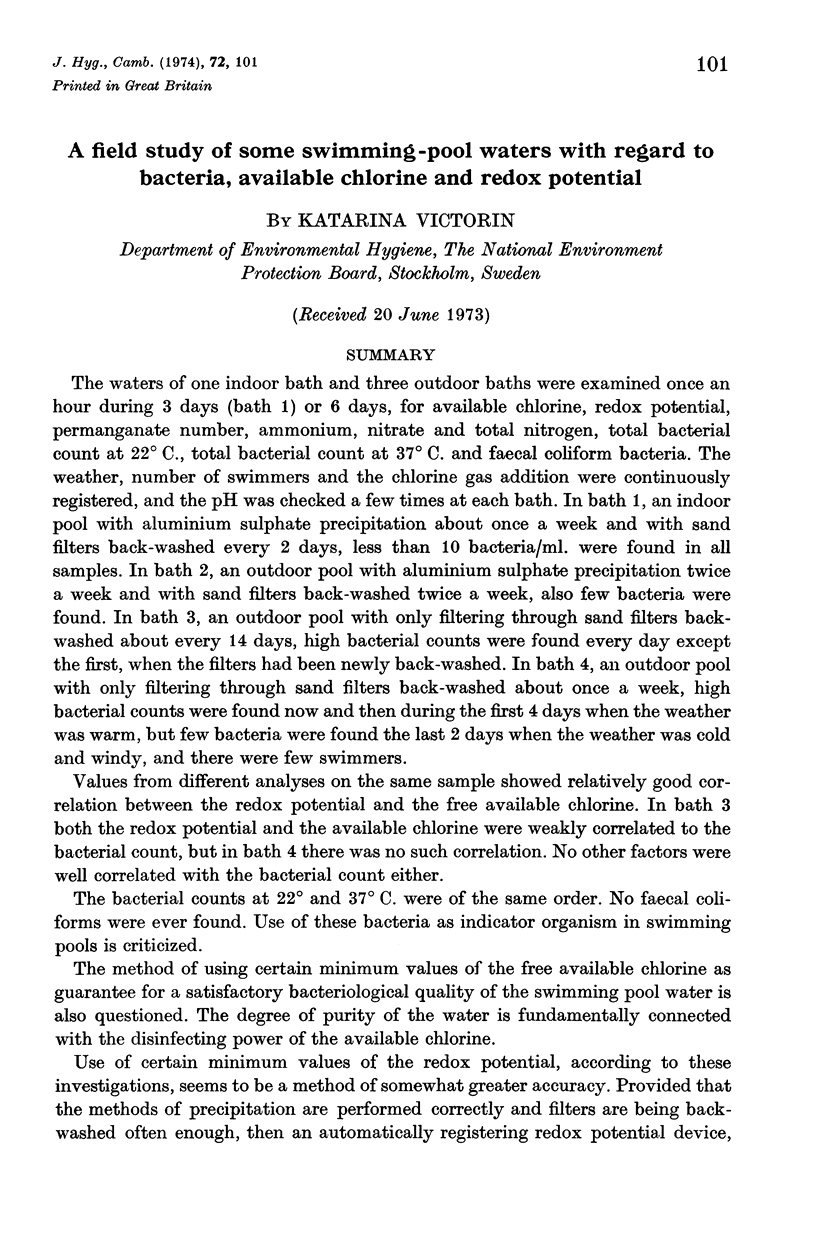
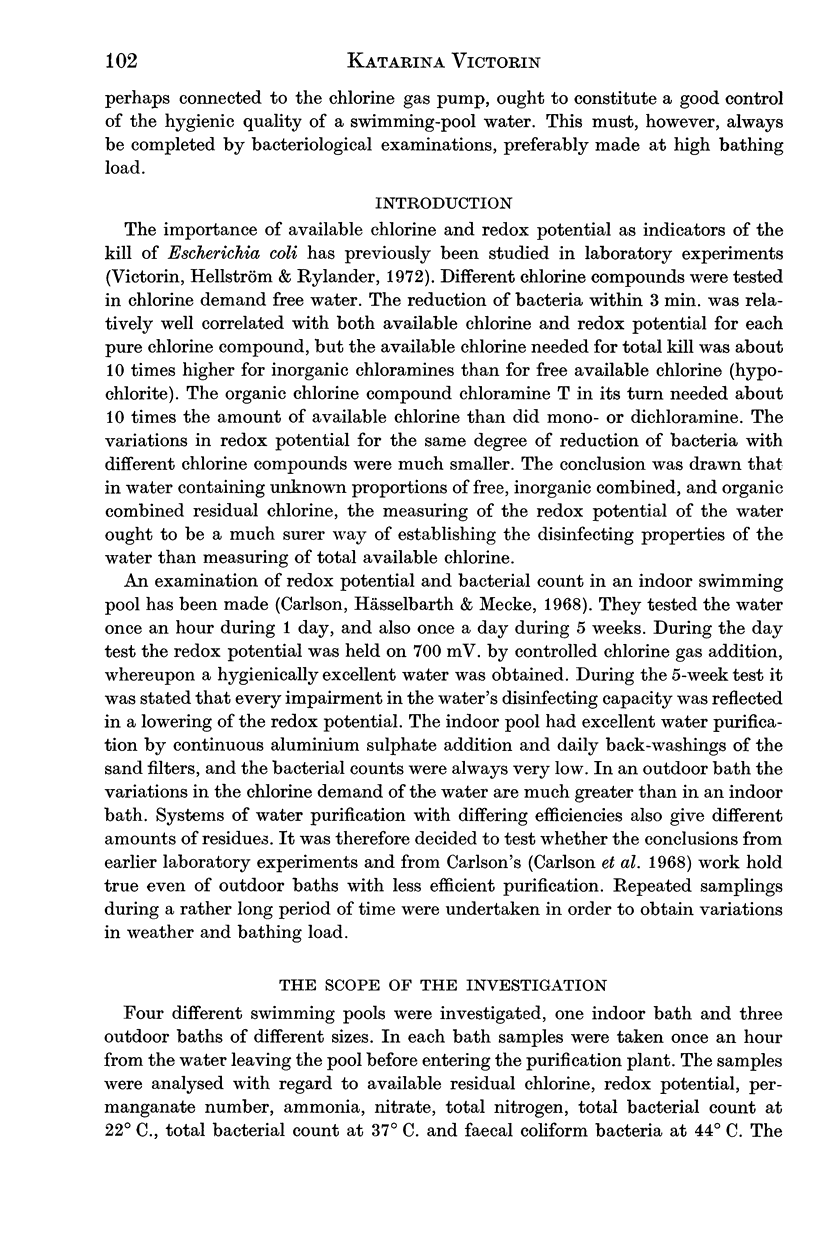
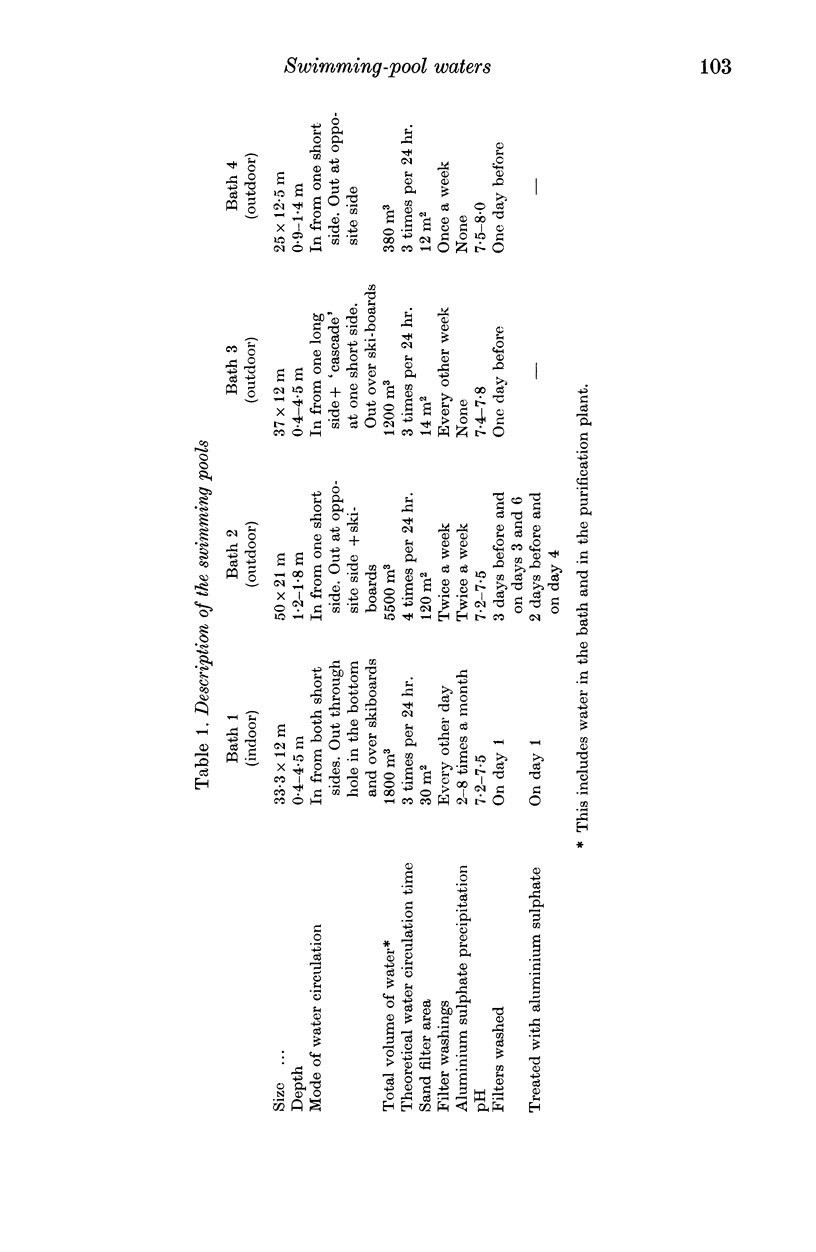
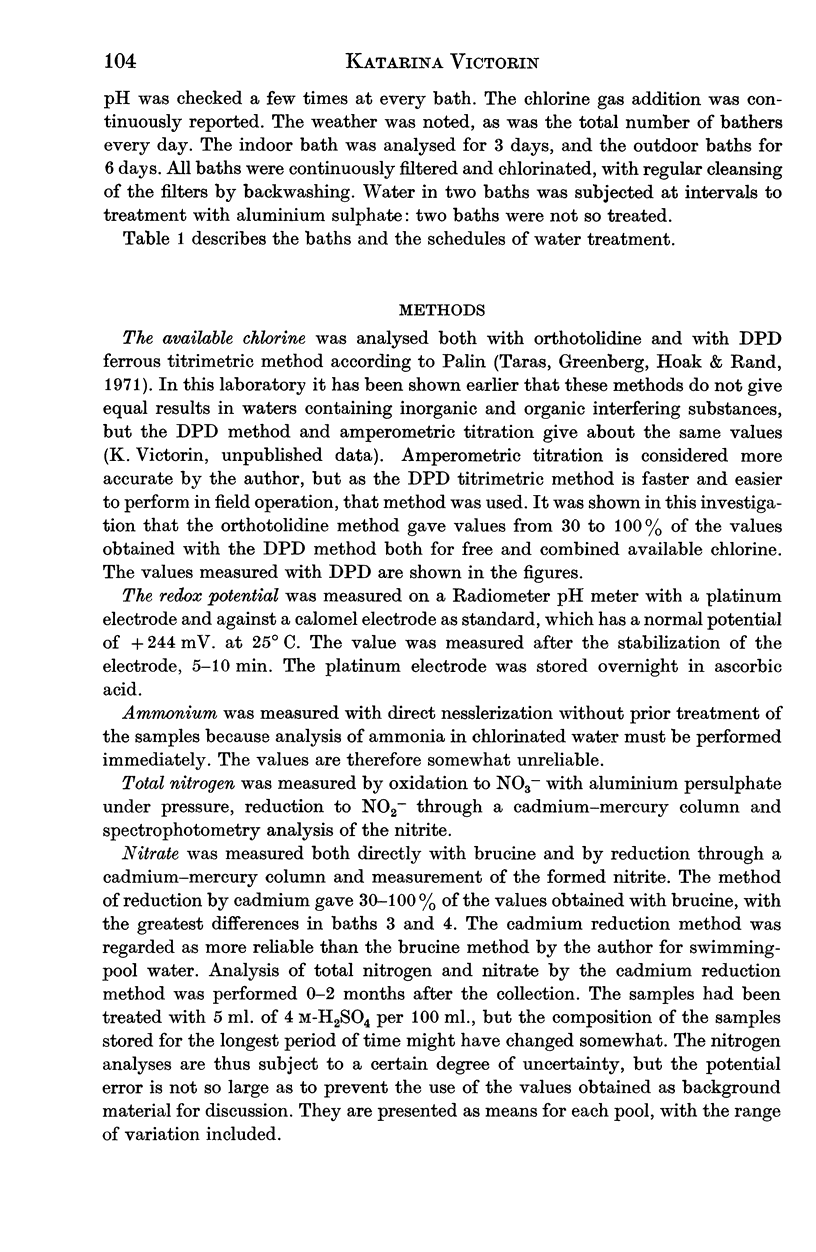
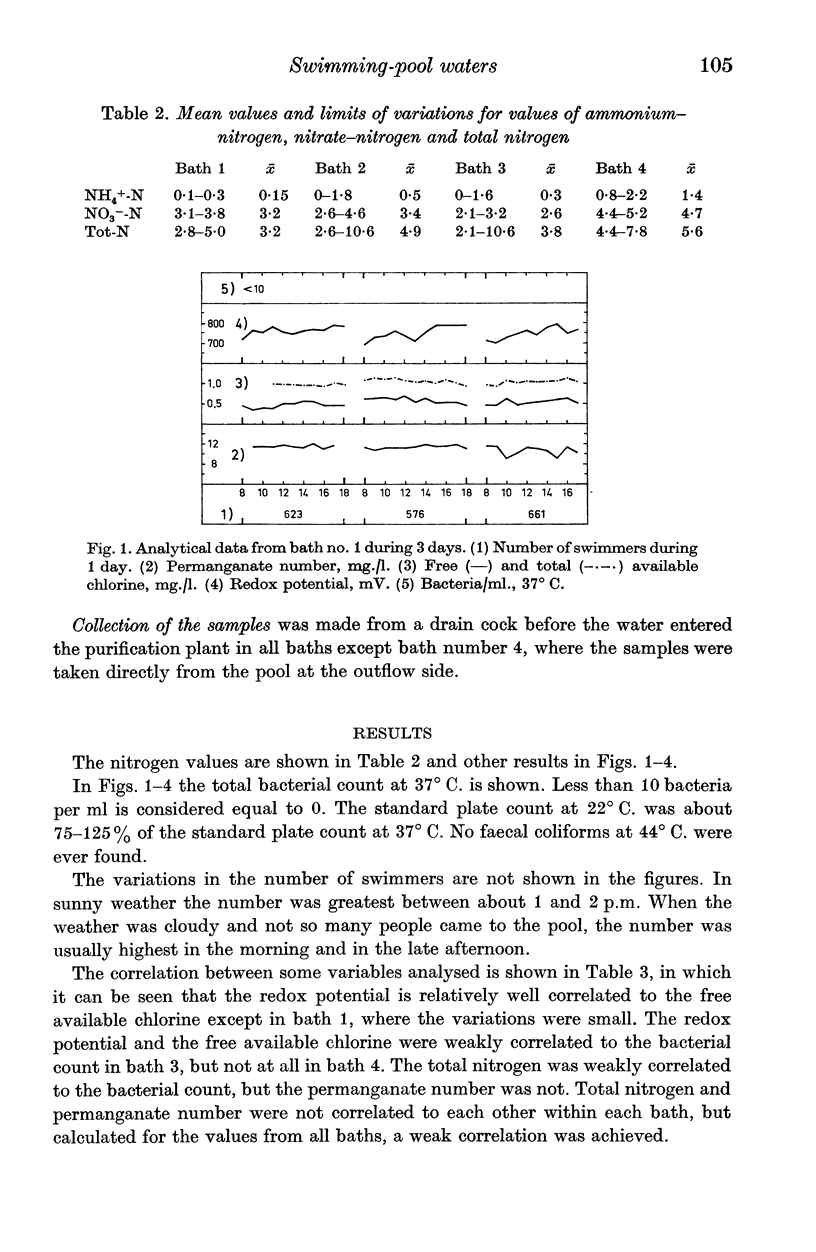
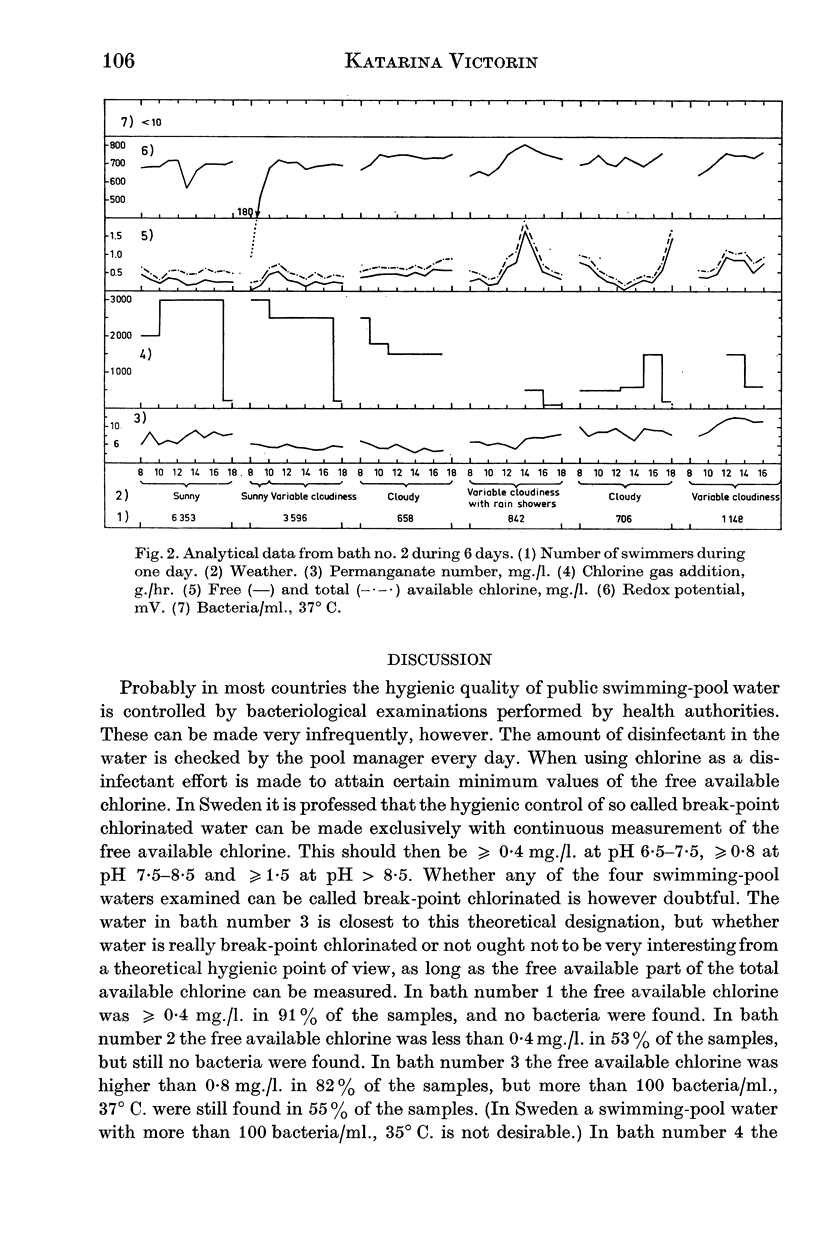
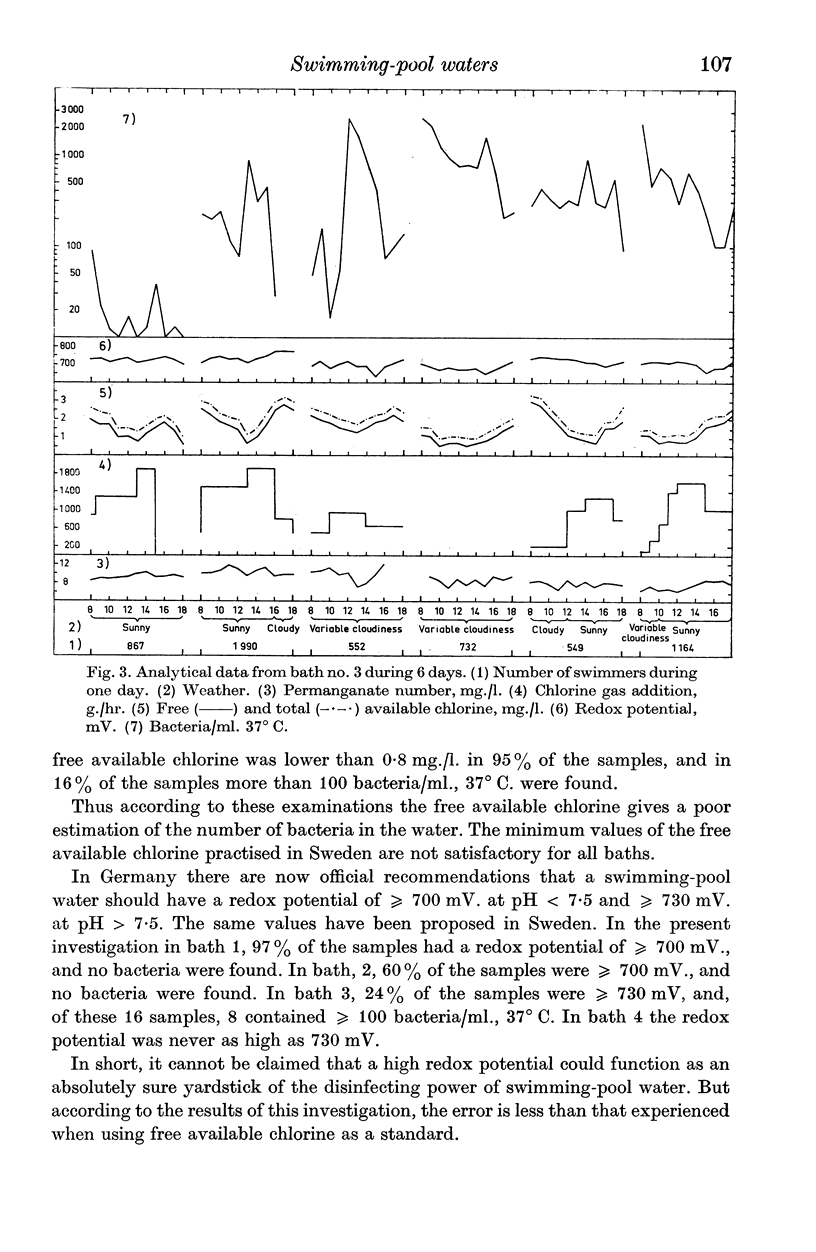
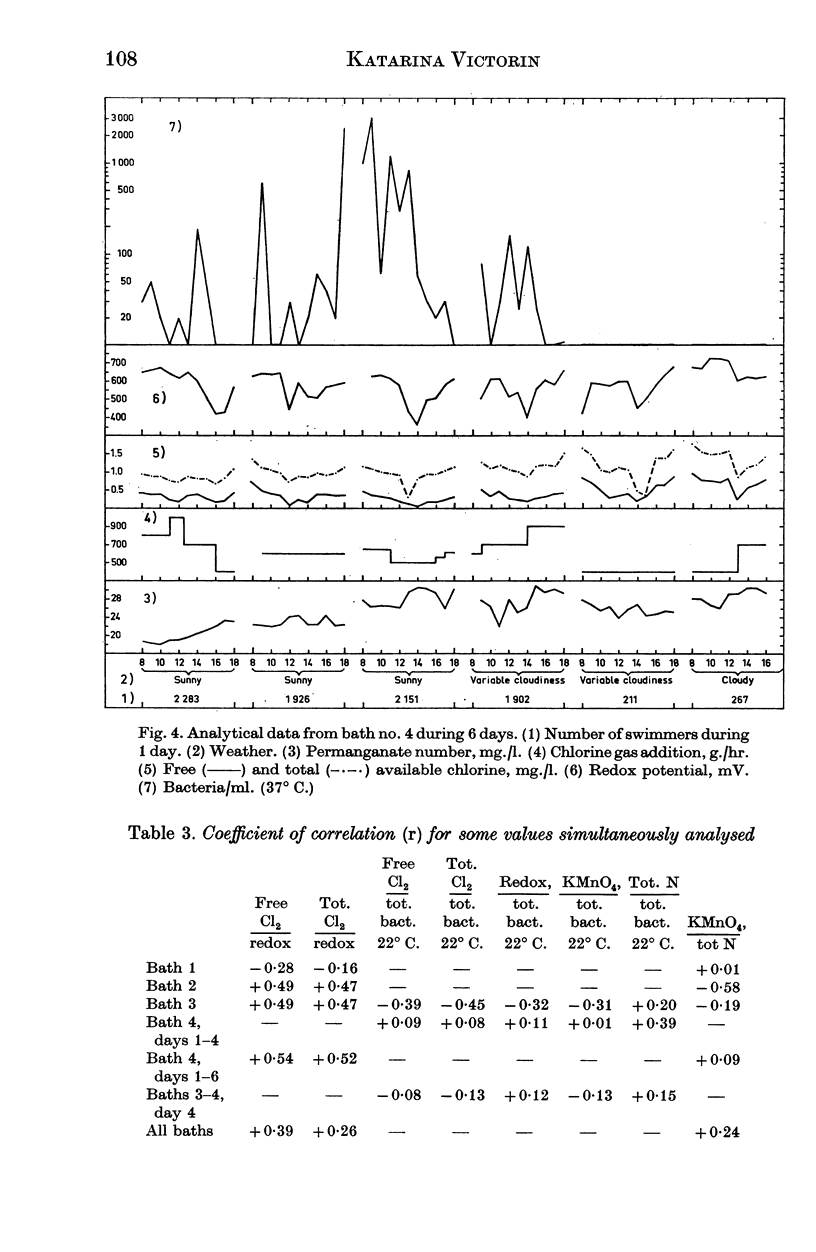

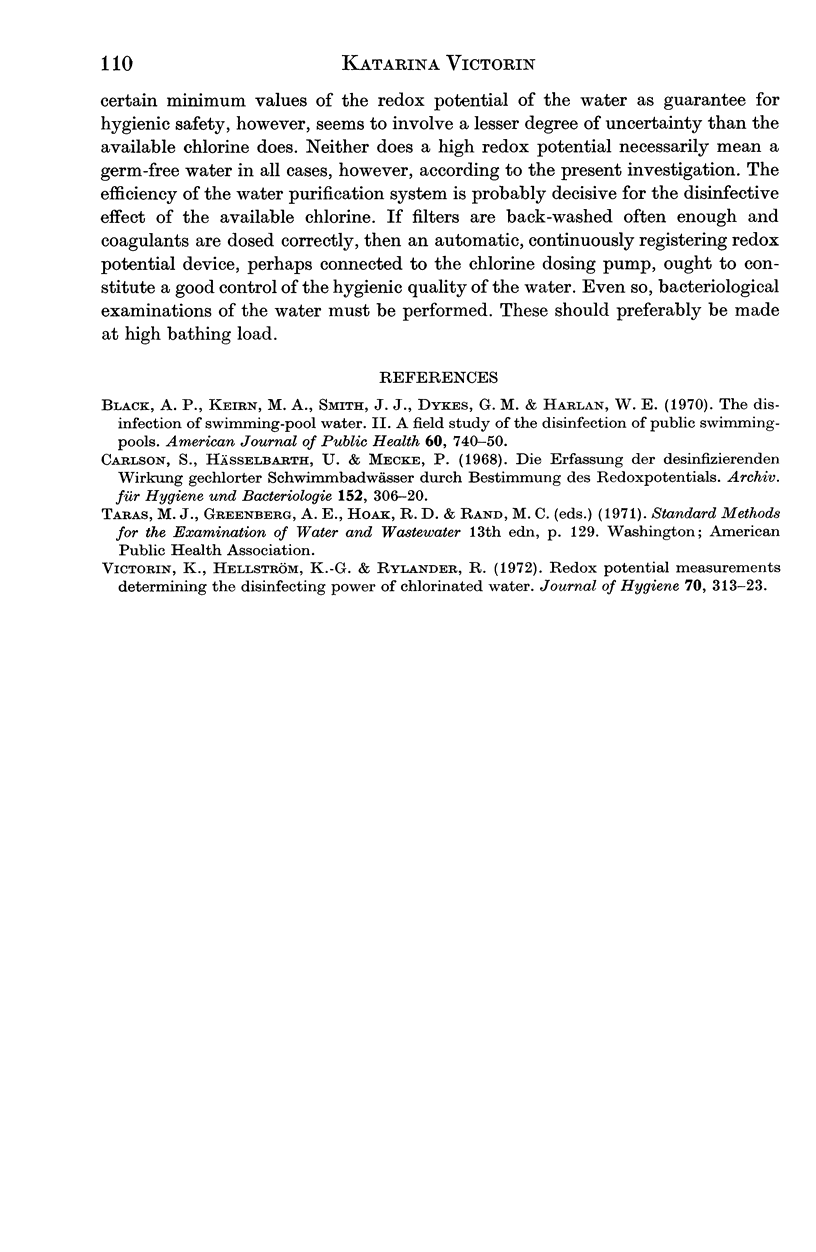
Selected References
These references are in PubMed. This may not be the complete list of references from this article.
- Black A. P., Keirn M. A., Smith J. J., Jr, Dykes G. M., Jr, Harlan W. E. The disinfection of swimming pool water. II. A field study of the disinfection of public swimming pools. Am J Public Health Nations Health. 1970 Apr;60(4):740–750. doi: 10.2105/ajph.60.4.740. [DOI] [PMC free article] [PubMed] [Google Scholar]
- Carlson S., Hässelbarth U., Mecke P. Die Erfassung der desinfizierenden Wirkung gechlorter Schwimmbadwässer durch Bestimmung des Redoxpotentials. Arch Hyg Bakteriol. 1968 Aug;152(4):306–320. [PubMed] [Google Scholar]
- Victorin K., Hellström K. G., Rylander R. Redox potential measurements for determining the disinfecting power of chlorinated water. J Hyg (Lond) 1972 Jun;70(2):313–323. doi: 10.1017/s0022172400022361. [DOI] [PMC free article] [PubMed] [Google Scholar]


